The International Hotel Senior Housing & St. Mary’s Chinese Catholic School.
Introduction
Text-to-speech Audio
Images
Photo Courtesy of Chris Huie; Manilatown Heritage Foundation
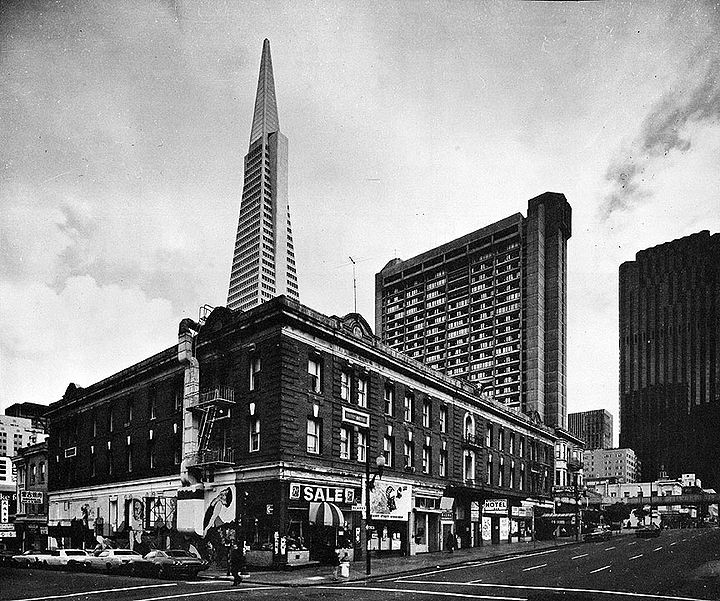
Photo courtesy of Chris Huie; Manilatown Heritage Foundation
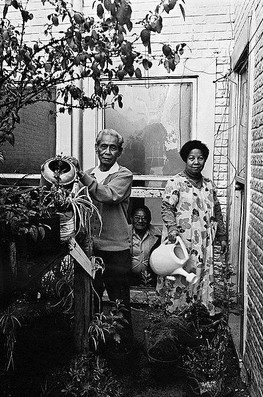
Photo Courtesy of Eddie Foronda; Manilatown Heritage Foundation
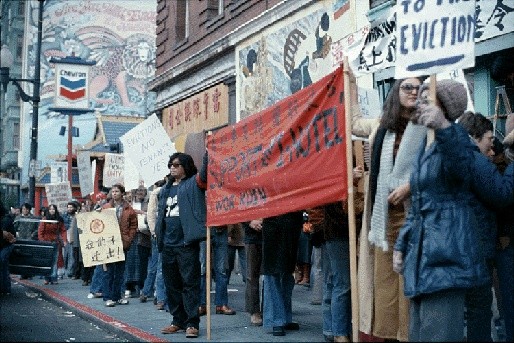
Photo Courtesy of James Sobredo; Manilatown Heritage Foundation
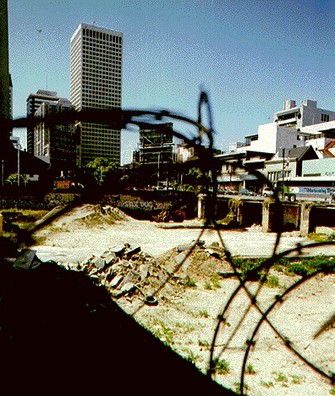
Photo Courtesy of Chinatown Community Development Center
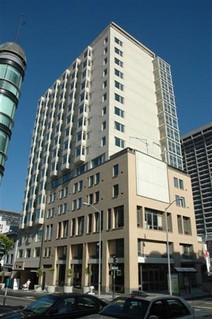
Backstory and Context
Text-to-speech Audio
Originally built in 1854 as a luxury hotel for wealthy travelers, the International Hotel was moved from its Jackson street location to 848 Kearny Street in 1873. Partially demolished by the earthquake in 1906, the International Hotel was rebuilt in 1907. By the 1920’s, the ten block area radiating from the International Hotel had become Manilatown, a thriving Filipino-American enclave. Manilatown was the first Filipino community in San Francisco, and one of the first to exist in America.
From 1920-1935, the International Hotel was a major residence for many of the 39,328 Filipino bachelors living in San Francisco. State exclusionary laws against Asians forbade Filipinos from owning land or setting up businesses, which ensured that these laborers were kept in low-earning, often migrant, jobs as farm hands, field-workers, waiters, merchant marines, and common laborers. As a result, the International House, or I-Hotel as locals called it, became a de-facto family providing much-needed cultural contact and social protection to Hotel residents. This unique crucible of ethnicity and necessity gave rise to the “manong” culture, as “manong” is a respectful Filipino term for an elder brother or uncle.
By 1968, the I-Hotel was occupied by ageing manongs who had been forced to lead isolated and transient lives due to the exclusionary anti-immigration laws of their youth. Ironically, many of these manongs were WWII veterans who’d fought Japanese incursion in the Philippines alongside American forces, survived the Bataan death march, and by virtue of American colonization were American nationals with rights under U.S. federal law. It was during this time that the urban renewal proponents began to renovate San Francisco, and the I-Hotel was very much on their agenda. On November 27, 1968, 150 elderly Filipino and Chinese tenants from Manilatown, many of whom resided in the International Hotel, began their nine-year anti-eviction battle against the urban renewal advocates in the Financial District; their efforts were aided by Berkeley students and widespread community grassroots support.
The Asian-American community mobilized in 1972 to promote pan-Asian culture and artistic expression through the Kearny Street Workshop, which was located in the International Hotel. Artists Leland Wong, Nancy Hom, and Jim Dong joined photographers Crystal Huie and Leny Limjoco, playwrights Lane Nishikawa and Norman Jayo, and poets Al Robles, George Leong, Doug Yamamoto, Genny Lim, Russell Leong, Jeff Tagami and Shirley Ancheta to forge Asian-American art and culture at the KSW. This space united Chinese, Filipino, Japanese, and Korean artists and writers into a single community which firmly believed that art was a key tool for social change. According to Robles, the International hotel “wasn't only a hotel: it was a gathering place that brought them together. It was celebration; it was ritual. It was bringing back a life." The KSW was integral to the anti-eviction efforts.
Milton Meyer & Company, who owned the building, were only too happy to sell the troublesome property to Hong Kong-based Four Seas Corporation: Walter Shorenstein, chairman of Milton Meyer, explains that “To my mind, I was getting rid of a slum." The anti-eviction campaign raged until August 4, 1977. At around 4 a.m., more than 300 riot-equipped police and sheriff deputies blockaded the streets, besieged the hotel, and began a daylong assault on the I-Hotel. Rather than push through the nine-person deep rows of activists surrounding the hotel, the police used the extension ladders on fire trucks to break into the top floors and brutally roust residents out of their homes and out through the ground flood. Wielding billy clubs and sledgehammers, the police raided the I-Hotel, breaking into the manongs’ rooms, stealing what the hastily evicted elders had left behind, and destroying the toilets so the elderly residents could not return. The protesters on the ground had linked arms to disallow police entry, and the police retaliated by ramming the crowd with their horses, and beating people on the head and back with nightsticks and riot clubs. The violent eviction made national headlines and cost $3 million in bad publicity for the city. Senator Frank Church of the Senate’s Committee on Aging sent a delegation to investigate the event.
The International Hotel was soon demolished, but after the building had been razed, the property sat vacant and ensconced in barbed wire fences for 20 years. The community that had fought to protect the I-Hotel worked tirelessly to ensure that affordable housing for the Filipino community would replace the historic building. Eventually, the property was purchased by the Archdiocese of San Francisco, who needed a new location for St. Mary’s School, which had been deemed unsafe under recently passed seismic ordinances. The Archdiocese partnered with the community to build affordable senior housing and facilities for Asian businesses and services as well as a Filipino community center in addition to the new school. Construction on the $20 million, 15-story, 104-unit building began in 1997.
The New I-Hotel opened on August 26, 2005. The apartments are secure, reasonably priced, and well-maintained homes that serve the needs of elderly tenants on a fixed income. The legacy and history of the old International Hotel is preserved by the Manilatown Heritage Center, which serves the cultural needs of the community and the tenants. Nutrition and health programs are two of the key social services provided for current tenants. St. Mary’s Chinese School and Catholic Center were completed in 2011. Nearly thirty years after the riotous evictions, the International Hotel has been returned to the community, and stands as a testament to the determination and resilience of that community.
Sources
Carlsson, Chris, and Lisa Ruth. Elliott. Ten Years That Shook the City: San Francisco 1968-1978: A Reclaiming San Francisco Book. San Francisco: City Lights Foundation, 2011. Print.
Dong, Harvey, et al. International Hotel’s Final Victory. San Francisco; International Hotel Senior Housing, INC., 2010. Print.
Habal, Estella. San Francisco's International Hotel: Mobilizing the Filipino American Community in the Anti-eviction Movement. Philadelphia: Temple UP, 2007. Print.
Smith, James R. San Francisco's Lost Landmarks. Sanger, CA: Word Dancer, 2005. Print.
